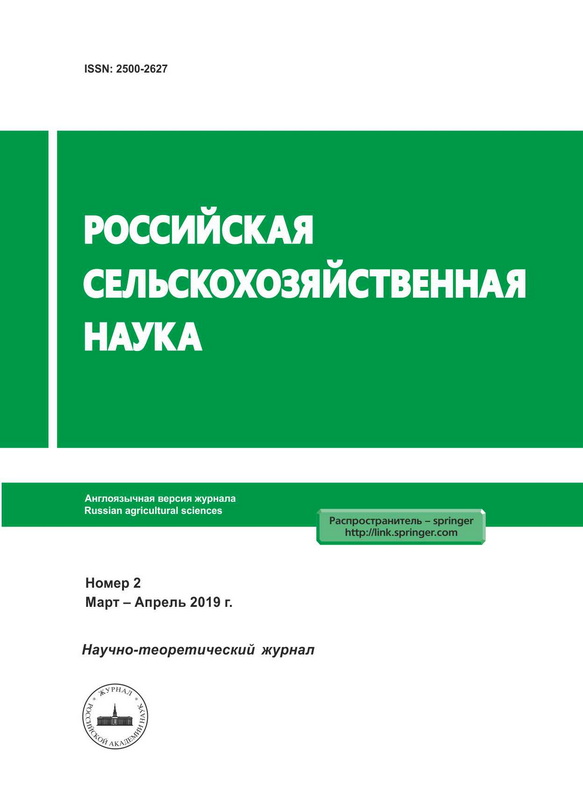Средообразующая и продукционная функция саксаула черного в пустыне Карнабчуль*
- Авторы: Шамсутдинова Э.З.1
-
Учреждения:
- Федеральный научный центр кормопроизводства и агроэкологии имени В.Р. Вильямса
- Выпуск: № 2 (2019)
- Страницы: 34-38
- Раздел: Экология
- URL: https://journals.eco-vector.com/2500-2627/article/view/15548
- DOI: https://doi.org/10.31857/S2500-26272019234-38
- ID: 15548
Цитировать
Полный текст
Аннотация
Исследовали средообразующую функцию пустынного дерева саксаула черного в пустыне Карнабчуль. Установлено, что его разновозрастные растения по-разному воздействуют на степень освещенности. На напряженность солнечной радиации в основном влияли средневозрастные растения, в меньшей степени – старые генеративные особи. Саксаул черный оказывал существенное воздействие на температуру воздуха: в дневное время, особенно в 13-16 ч, снижал температуру под кроной и на кайме кроны, а ночью повышал ее в этих зонах. Он также заметно влиял на температурный режим почвы. Ночью под кроной температура была выше, а днем ниже, чем во внешней части кроны саксаула. Под влиянием саксаула черного изменялась и влажность почвы. Под его кроной она заметно выше, чем на открытых природных пастбищах. Самой высокой она была в верхних слоях почвы у основания ствола саксаула. В результате средообразующего действия саксаула черного формируются благоприятные гидротермические условия для роста и развития природной полынно-эфемеровой растительности под защитой полос и на прилегающих к полосе участках пастбищ. Показаны составляющие продукционной деятельности пастбищезащитных полос из черного саксаула: кормовая масса саксаула и полынно-эфемеровой растительности естественных пастбищ. В результате повышения урожая природных пастбищ под защитой полос и урожая саксаула черного кормовая производительность пустынных пастбищ увеличивалась более чем в два раза.
Ключевые слова
Об авторах
Э. З. Шамсутдинова
Федеральный научный центр кормопроизводства и агроэкологии имени В.Р. Вильямса
Автор, ответственный за переписку.
Email: darplant@list.ru
кандидат сельскохозяйственных наук
Россия, Московская область, ЛобняСписок литературы
- Черепанов С.К. Сосудистые растения России и сопредельных государств. – С-Пб.: Мир и семья-95. 1995. – 992 с.
- Коровин Е.П. Растительность Средней Азии и Южного Казахстана. – Ташкент: Изд-во АН УзССР, 1961. – Т. 1. – 452 с.
- Лавренко Е.М. Провинциальное разделение Центральноазиатской и Ирано-туранской подобластей Афро-азиатской пустынной области // Ботанический журнал. – 1965. – Т. 50. – №1. – С. 13-15.
- Roohi A., Nazish B., Nabgha-e-Amen Maria M. et. al. Critical review on halophytes: Salt tolerant plants // Journal of Medicinal Plants Research. – 2011. – V. 5. – № 33. – P.7108-7118.
- Grigore M., Villanueva M., Boscaiu M. et al. Do Halophytes Really Reguire Salts for Their Growth and Development? An Experimental Approach // – 2012. – V. 5. – № 2. – P. 23-29.
- Акжигитова Н.И. Галофильная растительность Средней Азии и её индикационные свойства. – Ташкент: ФАН. – 1982. – 190 с.
- Пьянков В.И. Роль фотосинтетической функции в адаптации растений к условиям среды: Автореф. дис. ... докт. биол. наук. – М., 1993. –84 с.
- Chaolei Zheng and Quan Wang. Seasonal and annual variation in transpiration of a dominant desert species, Haloxylon ammodendron, in Central Asia up-scaled from sap flow measurement // Ecohydrology. – 2014. – 8. – P. 948-960.
- Xibin Ji, Wenzhi Zhao, Ersi Kang, Bowen Jin and Shiqin Xu. Transpiration from three dominant shrub species in a desertoasis ecotone of arid regions of Northwestern China // Hydrological Processes. – 2016. – 30. – P. 4841–4854.
- Шамсутдинов З.Ш., Косолапов В.М., Савченко И.В., Шамсутдинов Н.З. Экологическая реставрация пастбищ (на основе новых сортов кормовых галофитов). – М.: Изд-во: ФГОУ ДПОС РАКОАК, 2009. – 295 с.
- Енсен Н.П., Карти Д.Дж., Мартин Р., Руддер К., Шамсутдинов З.Ш., Шамсутдинов Н.З. Об использовании галофитов для реабилитации земель солеуглеводородного загрязнения и производства кормов // Сельскохозяйственная биология. – 2004. – №6. – С. 78–91.
- Федосеев А.П., Грингоф И.Г., Нурбердыев М., Рейзвих О.Н. Средообразующее влияние фитомелиоративных насаждений на пастбищах // Проблемы освоения пустынь. – 1982. – № 6. – С. 27-32.
- Нечаева Н.Т., Шамсутдинов З.Ш. Антропогенная динамика пустынных биогеоценозов и пути восстановления их продуктивности // Проблема антропогенной динамики биогеоценозов. VIII Чтения памяти академика В.Н. Сукачева. – М: Наука, 1990. – С. 31-53.
- Шамсутдинов З.Ш., Убайдуллаев Ш.Р., Шамсутдинов Н.З., Санжеев В.В. Средообразующая функция саксаула чёрного (Haloxylon aphyllum (Minkw.) Iljin.) в пустыне Карнабчуль // Экология. – 2016. – № 1. – С. 44-49.
- Методические указания по мобилизации растительных ресурсов и интродукции кормовых растений. – М.: Россельхозакадемия, 2000. – 82 с.
- Уранов А.А. Фитогенное поле // Проблемы современной ботаники. – 1965. – Т.1. – С. 251-254.
- Работнов Т.А. Фитоценология. – М.: МГУ, 1983. –296 с.
- Черняева Е.В., Викторов В.П. Фитогенное поле: история и современные направления изучения // Современная концепция экологии биосистем и их роль в решении проблем сохранения природы и природопользование: Всероссийская (с международным участием) научная школа – конференция, посвященная 115-летию со дня рождения А.А. Уранова, 2016. – С. 332-335.
- Леонтьев В.Л. Саксауловые леса пустыни Каракум .– М.-Л.: Изд-во Академии наук СССР,1954. – 69 с.
- Пашковский К.А. Некоторые итоги работ по культуре чёрного саксаула в Казахстане. В кн.: Труды Института ботаники. – Алма-Ата: АН Каз. ССР, 1956. – Т. 3. – 239 с.
Дополнительные файлы









